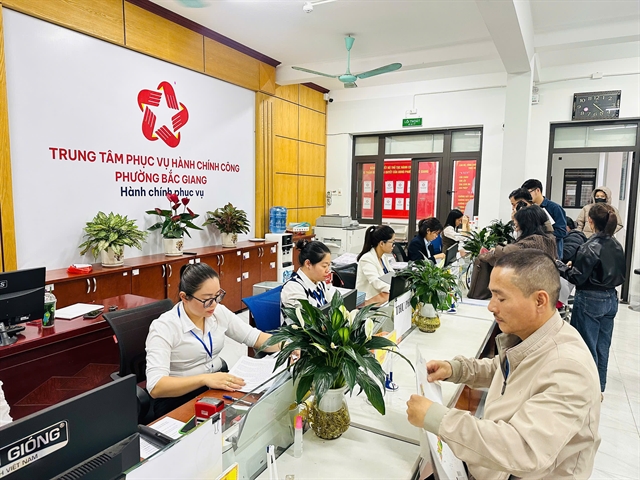 Environment
Environment

 |
| Visitors view an exhibition booth showcasing eco-friendly products in Huế City. — VNA/VNS Photo Hồ Cầu |
HÀ NỘI — Two decades after Việt Nam introduced eco-labelling regulations, the push for greener goods still hasn’t quite taken root, experts have said.
Many have called for a comprehensive approach to develop a market for eco-labelled products, based on two parallel strategies on stimulating consumer demand and supporting supply-side development.
Lack of resources and clear incentives
Amid growing climate change and pollution challenges, eco-labelling for products and services is considered a practical tool to promote sustainable production and consumption. It helps businesses transition from polluting products to green alternatives while enabling consumers to access eco-friendly goods that protect health.
According to Lê Hoài Nam, deputy director of the Department of Environment under the Ministry of Agriculture and Environment, legal provisions on eco-labels were included in the 2005 and 2014 environmental protection laws and further refined in the 2020 law.
A pilot programme for eco-labelling launched in 2009, focusing on two groups of products certified with Việt Nam’s Green Label. The ministry also issued detailed criteria for these groups.
Over time, some businesses have received certification, but the numbers remain low. Key reasons include weak domestic enterprise capacity, limited resources for technological innovation, unclear incentive policies and many regulations that remain only at the law level without detailed guidance.
“For example, the law sets an environmental tax of VNĐ40,000 per kilogramme on non-biodegradable plastic bags to discourage production and promote bio-based alternatives. However, many small facilities evade taxes and continue making these bags,” Nam noted.
Deputy Director of the Institute of Strategy and Policy on Agriculture and Environment Nguyễn Trung Thắng emphasised that green transition is an inevitable trend, yet eco-label adoption remains modest after more than 20 years.
He cited figures showing that in 2017, Việt Nam had 17 eco-label criteria. Between 2024 and 2025, only 13 more products were certified. While local consumers are increasingly concerned about food safety, technology barriers, costs, and administrative procedures remain major obstacles.
Senior researcher Nguyễn Thế Chinh of the Institute of Meteorology, Hydrology and Climate Change added that implementation still faces multiple issues, starting with the role of businesses, the main actors in applying eco-labels.
To qualify, companies must meet strict criteria, but transitioning from uncertified to certified products is a long and costly process.
Another challenge is consumer market development.
“There need to be clear strategies for branding and marketing eco-labelled products to attract buyers,” Chinh said.
He also noted a third factor: domestic policy delays.
“For instance, after the Environmental Protection Law was issued, along with guidelines from the Ministry of Finance on green transition, many points still require adjustment,” he said.
Building an attractive market
Deputy Director of the Department of Environment Nam acknowledged that the current eco-labelled product market in Việt Nam is very small. Previously, around 100 products were certified, but only a few more have joined since then.
In contrast, in Japan, the total market value of eco-labelled products and services surpassed US$44 billion in 2016 and has grown significantly since.
“This comparison shows how tiny Việt Nam’s market is, highlighting the need for practical and effective solutions,” Nam said.
Chinh recommended introducing targeted, time-bound policies to boost green product development, such as tax incentives and financial support for producers.
“Creating a market for green products remains challenging, as a strong foundation has yet to form. Breakthrough measures are needed to attract consumers, such as stronger communication and product promotion,” he said.
He also emphasised improving the legal and policy framework to facilitate green production and consumption, including environmental regulations and green product standards. The Government should lead by example through green procurement to drive market growth.
To build consumer trust, stricter monitoring and penalties for counterfeit or fake eco-labelled products are essential, Chinh added.
Deputy Director of the Institute of Strategy and Policy on Agriculture and Environment Thắng further suggested that authorities focus on institutional reforms to create an attractive market for eco-labelled goods, develop sector-specific criteria aligned with green transition roadmaps and domestic consumer needs, simplify administrative procedures and provide easier access to support programmes and preferential loans.
“It’s also worth considering delegating eco-label certification to independent organisations instead of leaving it solely to State agencies,” Thắng said. — VNS




